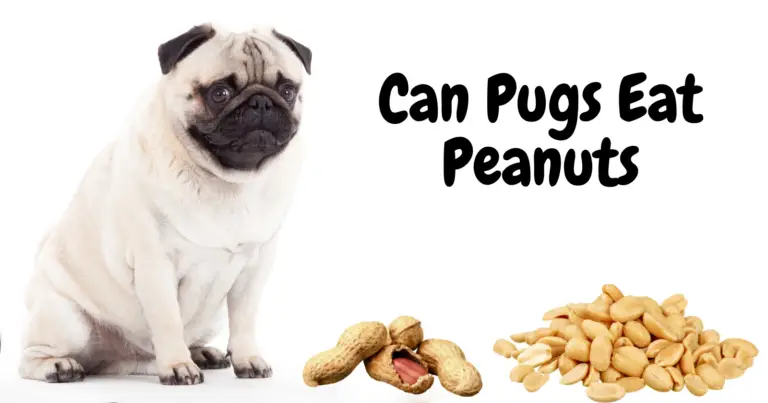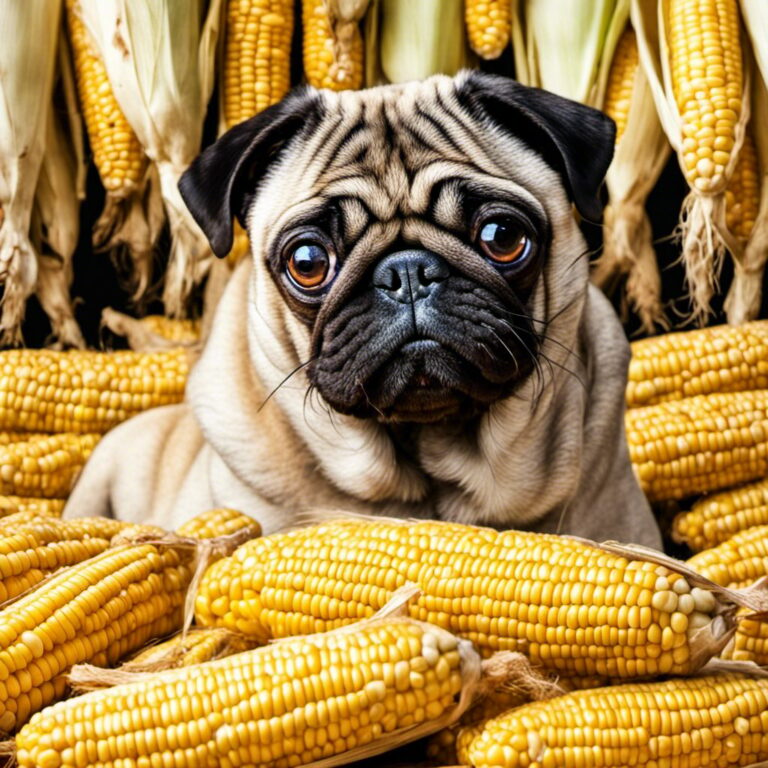Can Pugs Eat Mango? A Concise Guide for Dog Owners

As a pug owner, you might wonder if sharing a delicious and nutritious fruit with your furry friend is safe. Can Pugs Eat Mango? The good news is that pugs can indeed eat mango, and this tropical fruit offers various health benefits for your pet. Mangoes are high in fiber and packed with vitamins A, B6, C, and E, which can contribute to your pug’s overall well-being.

However, it’s essential to be cautious when feeding your pug mango. Always peel the mango and remove the pit before offering it to your pet, as these parts can be dangerous for them. Additionally, moderation is crucial – only give your pug small amounts of mango as a treat or occasional snack.
By keeping these tips in mind, you can safely introduce mango into your pug’s diet, providing them with a delightful, nutritious snack filled with flavors they can enjoy.
Contents
Table of Contents
Can Pugs Eat Mango

Yes, your pugs can enjoy mangoes as a tasty and healthy treat. Mangoes are rich in fatty acids, antioxidants, vitamins, and nutrients that are beneficial for your pug. However, it’s essential to remember that moderation is key when feeding your pug mangoes.
Get The Free Food Eating Guide That Keeps My Pug Happy and Playful Even at 13 Years Old
100% Beginner Friendly & Lists Real Foods Your Pug Can Actually Eat!

When offering mangoes to your pug, make sure to remove the skin and pit, as these parts can be harmful. The skin can be tough for your pug to digest, and the pit could pose a choking hazard or cause intestinal blockage. Cutting the mango into small pieces is best, ensuring only the soft flesh is given to your pug.
While mango has several benefits for your pug, it is important to remember that treats should make up no more than 10% of their daily diet. Too many mangoes might lead to weight gain or digestive issues. Since pugs are prone to obesity, maintaining a balance in their diet is crucial.
In conclusion, feeding your pug mango can be a delightful and beneficial experience if it is done in moderation and with proper preparation. Always monitor your dog’s reaction to new foods to ensure they don’t have an adverse reaction or allergy.
Health Benefits of Mango for Pugs

Mangoes are delicious and packed with essential vitamins, minerals, and nutrients that can benefit your pug. This tropical fruit offers several health advantages for your furry friend when fed in moderation.
One of the key benefits of mangoes is their richness in vitamins, specifically vitamins A, C, and E. Vitamin A is vital for healthy vision, skin, and immune systems. Vitamin C, which acts as an antioxidant, assists in strengthening your pug’s immune system, while vitamin E helps to keep their skin and coat in top condition.
In addition to vitamins, mangoes are an excellent source of dietary fiber. Including some mango in your pug’s diet can aid in their digestion and help maintain a healthy weight. Remember, moderation is key, as excessive fiber intake may lead to digestive issues.
Feeding your pug mango also provides them with essential minerals such as calcium, potassium, and magnesium. These minerals are vital for maintaining strong bones, regulating muscle functions, and supporting overall health.
Mangoes contain many antioxidants, including beta-carotene, which may help protect your pug from cellular damage and certain diseases. Antioxidants are crucial in keeping your pug’s immune system strong and warding off harmful free radicals.
Lastly, the fatty acids present in mangoes contribute to your pug’s overall health by promoting a shiny coat, reducing inflammation, and supporting brain function. These healthy fats are essential for maintaining your pug’s well-being.
While mango offers numerous health benefits, it is essential only to serve the fruit’s flesh and avoid feeding the skin or pit, which can be harmful to your pug. Ensure that you introduce mangoes gradually, monitor their reactions, and always keep their servings to a minimum to ensure their health and safety.
The Role of Mango in a Pug’s Diet

Mangoes can be a beneficial addition to your pug’s diet when fed in moderation. These delicious fruits are rich in fatty acids, antioxidants, and nutrients that can help support the overall health of your pug. However, being mindful of how you prepare and serve mangoes to your pug is essential.
Always remember to remove the peel and pit when incorporating mango into your pug’s diet. The peel is tough and difficult for dogs to digest, which can lead to bloating or other digestive issues 1(https://smallanimaladvice.com/can-pugs-eat-mango/). The pit poses a choking hazard and can cause obstructions if ingested.
Mangoes can serve as a healthy snack for your pug, offering dietary fiber, vitamins, and minerals. They are an excellent source of vitamin C, vitamin A, and potassium; these nutrients contribute to your pug’s immune system function, vision, and heart health. In addition to these benefits, the dietary fiber in mangoes can aid digestion and help maintain a healthy weight for your pug 2(https://blackpugsite.com/can-pugs-eat-mango/).
Though mangoes offer several benefits, it’s crucial to maintain a balanced diet for your pug. This means not overfeeding them mangoes or using them as a replacement for their regular dog food. Your pug’s primary diet should consist of high-quality dog food that provides essential proteins, fats, and other nutrients for their overall well-being.
You can think of mangoes as an occasional treat or supplement to their regular meals. Be careful not to overfeed them, as too much of any fruit can cause digestive issues 3(https://petcreeks.com/can-pugs-eat-mango/).
In conclusion, incorporating mangoes into your pug’s diet can provide various health benefits, making them an excellent snack when served in moderation and properly prepared. Remember to maintain a balanced diet for your pug by primarily feeding them high-quality dog food and using mangoes as a supplement. By following these guidelines, you can ensure your pug enjoys the delicious taste and health benefits of mangoes without any adverse effects.
Potential Risks of Feeding Mango to Pugs

While mangoes can be a healthy and delicious treat for your pug, it’s important to be aware of the potential risks associated with feeding them this fruit. Feeding mangoes to your pug incorrectly or in large quantities can result in a variety of negative health consequences.
One major concern when feeding your pug mangoes is the choking hazard posed by the large seeds and pits. These hard, slippery objects can easily become lodged in your pug’s throat, obstructing their airway and potentially leading to a life-threatening situation. Always remove the seed or pit from the mango before offering it to your pug to prevent this risk.
In addition to the choking hazard, the seeds of some fruits, like apples and cherries, contain trace amounts of cyanide, which can be harmful to dogs. While mango seeds do not contain cyanide, avoiding letting your pug consume them is important, as they can present a risk for intestinal blockages and other digestive issues.
Feeding your pug too much mango can also cause gastrointestinal upset. This is because mangoes are high in sugar and fiber, which may cause diarrhea, vomiting, or other digestive problems in sensitive dogs. If you notice any signs of gastrointestinal distress in your pug after feeding them mangoes, such as vomiting, diarrhea, lethargy, or loss of appetite, it’s important to consult with a veterinarian.
To minimize these risks, moderation is key when offering mango to your pug. Stick to small, infrequent portions of this fruit, and always monitor your dog for any adverse reactions. By being aware of these potential hazards and taking proper precautions, you can safely share mangoes’ delicious and nutritious benefits with your pug.
Preparation of Mango for Pugs

Preparing mango for your pug is quite simple, and it requires just a few steps to ensure it’s safe and enjoyable for your pet. First, you’ll want to select a ripe mango. A ripe mango will have a sweet aroma, a slightly soft feel, and no visible signs of mold or damage.
To begin the preparation process, grab a sharp knife and start by peeling the mango. Removing the skin is important, as the peel can be difficult to digest and may cause bloating or other digestive issues in your pug. Be cautious while using the knife to avoid any injuries.
Once you have removed the skin, you will notice the fleshy part of the mango. This is the part that is safe and nutritious for your pug to consume. It’s rich in vitamins A, B6, C, and E, providing several health benefits for your pet.
Next, you’ll need to cut the fleshy part away from the core. The core is hard and poses a choking hazard for your pug. Slice the mango into small, bite-sized pieces that will be easy for your furry friend to chew and digest.
As a final step, consider blending the mango pieces with some plain Greek yogurt and freezing the mixture in ice cube trays or silicone molds. This creates a tasty, refreshing treat your pug can enjoy, especially during hot summer days.
Remember, moderation is crucial when feeding your pug human foods like mangoes. Too much of a good thing can lead to stomach upset or other health issues. Following these simple preparation steps, you can provide your pug with a delicious and healthy treat they’ll love.
Can Pugs Eat Mango? Watch this
Alternatives to Mango for Pugs
There are plenty of safe and healthy choices if you’re looking for other fruit options to offer your pug besides mango. Some nutritious fruits that can be added to your pug’s diet include bananas, blueberries, and peaches.
Bananas are a great source of vitamins, minerals, and fibers, aiding digestion and boosting your pug’s immune system. Make sure to remove the peel and only give your dog the soft fruit inside. Blueberries are rich in antioxidants, vitamin C, and fiber. They also provide a tasty, bite-sized treat that can be easily mixed into your pug’s meal or given as a snack.
Without the pit, peaches are also a good option, loaded with vitamins A and C. They’re a juicy alternative, but be cautious, as pits can be dangerous to your pug when ingested.
On the other hand, oranges should be given sparingly due to their high sugar content. Remove the peel and seeds, and limit their consumption to avoid potential health issues.
Consider offering carrots if you want to incorporate vegetables into your pug’s diet. They are an excellent low-calorie treat, rich in vitamins, minerals, and dietary fiber. Chewing on raw carrots can also help improve dental health by removing plaque and cleaning your pug’s teeth.
While avocados might be off-limits due to their potential toxicity to dogs, you can still provide your pug with a well-rounded diet by incorporating these safe and beneficial fruits and vegetables. Remember always to monitor their consumption and introduce new foods gradually to avoid stomach upsets or other adverse reactions.
Conclusion: Can Pugs Eat Mango?

As a pug owner, knowing which foods are safe for your furry friend to consume is essential. Mangoes can, in fact, be a nutritious and healthy snack for pugs. These fruits are high in fiber and vitamins A, B6, C, and E, which can benefit your dog.
However, there are some precautions you must take when feeding your pug mangoes. First, peel the skin and remove the pit, as the skin can be difficult for your pug to digest, and the pit could pose a choking hazard. Furthermore, moderation is key when offering mangoes to your pug. Only provide small amounts of mango as an occasional treat, as overconsumption could lead to digestive issues.
To ensure your pug’s safety and overall well-being, it’s always a good idea to consult with a veterinarian before introducing new foods to their diet. They can provide personalized guidance based on your pug’s size, age, and health.
By following these guidelines and considering the advice of a veterinarian, you can confidently introduce mangoes as an occasional treat for your pug, knowing that it’s a safe and nutritious option for them to enjoy.
Frequently Asked Questions
Can pugs consume mango safely?
Yes, pugs can safely consume mango in moderation. Mangoes are a good source of vitamins A, B6, C, and E, making them a healthy treat for your pooch. However, it is important to feed them only the flesh part of the mango as it is safe and nutritious source.
Is mango skin harmful to pugs?
Although not toxic, the mango skin can be tough and difficult for pugs to digest. It is recommended to remove the skin before giving the mango fruit to your pug to avoid potential digestive issues source.
Are mango seeds dangerous for pugs?
Yes, mango seeds can be dangerous for pugs because they pose a choking hazard. Additionally, the seeds contain a small amount of cyanide, which can be harmful to your pug if ingested. Always remove the seed and give only the flesh part of the mango to your pug source.
Can pugs have mango juice?
No, it is not recommended to give mango juice to pugs. Processed mango juices often contain added sugar and preservatives, which can be harmful to your pug’s health. Additionally, pugs might have difficulty digesting large amounts of sugar found in mango juices source.
Is dried mango okay for pugs?
Dried mango may not be the best choice for pugs, as it is typically high in sugar content. Although not toxic, consuming excessive amounts of sugar may cause gastrointestinal upset and might not be suitable for pugs with existing health conditions, such as diabetes source.
How much mango can a pug eat?
When feeding mango to your pug, moderation is key. Give your pug a small piece of mango flesh as an occasional treat, and monitor their reaction to it. It is always best to consult with a veterinarian regarding specific dietary recommendations for your pug.






